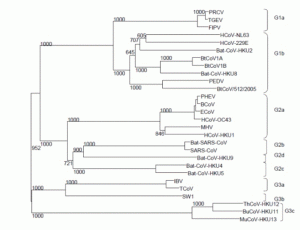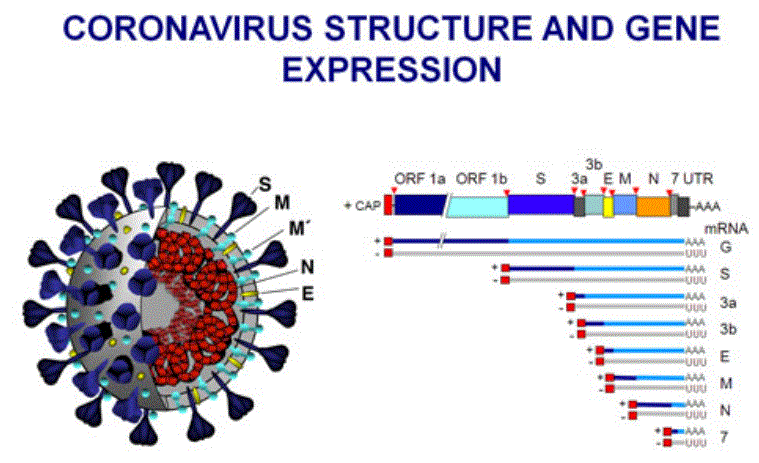
Homologous recombination within the spike glyco-protein of the newly identified corona-virus may boost cross-species transmission from snake to human.
Journal: Journal of medical virology
January/22/2020

The current outbreak of viral pneumonia in the city of Wuhan, China, was caused by a novel corona-virus designated 2019-nCoV by the World Health Organization, as determined by sequencing the viral RNA genome. Many patients were potentially exposed to wildlife animals at the Huanan seafood wholesale market, where poultry, snake, bats, and other farm animals were also sold. To determine the possible virus reservoir, we have carried out comprehensive sequence analysis and comparison in conjunction with relative synonymous codon usage (RSCU) bias among different animal species based on existing sequences of the newly identified coronavirus 2019-nCoV. Results obtained from our analyses suggest that the 2019-nCoV appears to be a recombinant virus between the bat corona-virus and an origin-unknown coronavirus. The recombination occurred within the viral spike glycoprotein, which recognizes cell surface receptor. Additionally, our findings suggest that snake is the most probable wildlife animal reservoir for the 2019-nCoV based on its RSCU bias resembling snake compared to other animals. Taken together, our results suggest that homologous recombination within the spike glycoprotein may contribute to cross-species transmission from snake to humans.
Wei Ji; Wei Wang; Xiaofang Zhao; Junjie Zai; Xingguang Li
Coronaviruses: genome structure, replication, and pathogenesis.
Journal: Journal of medical virology
January/22/2020
The recent emergence of a novel coronavirus (2019-nCoV), which caused an outbreak of unusual viral pneumonia in tens of people in Wuhan, a central city of China, restated the risk of coronaviruses posed to public health. In this mini-review, we give a brief introduction of the general features of coronaviruses and describe various diseases caused by different coronaviruses in humans and animals. This review will help understand the biology and potential risk of coronaviruses that exist in richness in wildlife such as bats.
Yu Chen; Qianyun Liu; Deyin Guo
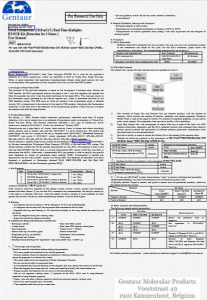
Recent advances in the detection of respiratory virus infection in humans.
Journal: Journal of medical virology
January/16/2020
Respiratory tract viral infection caused by viruses or bacteria is one of the most common diseases in human worldwide, while those caused by emerging viruses, such as the novel coronavirus, 2019-nCoV that caused the pneumonia outbreak in Wuhan, China most recently, have posed great threats to global public health. Identification of the causative viral pathogens of respiratory tract viral infections is important to select an appropriate treatment, save people’s lives, stop the epidemics, and avoid unnecessary use of antibiotics. Conventional diagnostic tests, such as the assays for rapid detection of antiviral antibodies or viral antigens, are widely used in many clinical laboratories. With the development of modern technologies, new diagnostic strategies, including multiplex nucleic acid amplification and microarray-based assays, are emerging. This review summarizes currently available and novel emerging diagnostic methods for the detection of common respiratory viruses, such as influenza virus, human respiratory syncytial virus (RSV), coronavirus, human adenovirus (hAdV), and human rhinovirus (hRV). Multiplex assays for simultaneous detection of multiple respiratory viruses are also described. It is anticipated that such data will assist researchers and clinicians to develop appropriate diagnostic strategies for timely and effective detection of respiratory virus infections.
Naru Zhang; Lili Wang; Xiaoqian Deng; Ruiying Liang; Meng Su; Chen He
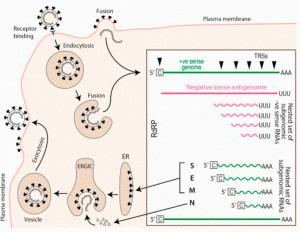
The continuing 2019-nCoV epidemic threat of novel coronaviruses to global health – The latest 2019 novel coronavirus outbreak in Wuhan, China.
Journal: International journal of infectious diseases : IJID : official publication of the International Society for Infectious Diseases
Januar/18/2020
David Hui; Esam Azhar; Tariq Madani; Francine Ntoumi; Richard Kock; Osman
Outbreak of Pneumonia of Unknown Etiology in Wuhan China: the Mystery and the Miracle.
Journal: Journal of medical virology
January/17/2020
Since December 2019, a total of 41 cases of pneumonia of unknown etiology have been confirmed in Wuhan city, Hubei Province, China. Wuhan city is a major transportation hub with a population of more than 11 million people. Most of the patients visited a local fish and wild animal market last month. At a national press conference held today, Dr. Jianguo Xu, an academician of the Chinese Academy of Engineering, who led a scientific team announced that a new-type coronavirus, tentatively named by World Health Organization as the 2019-new coronavirus (2019-nCoV), had caused this outbreak (1).
Hongzhou Lu; Charles Stratton; Yi-Wei Tang
Diseases(1)Organisms(2)Authors(3)
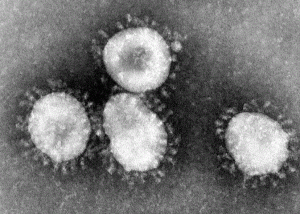
A Novel Coronavirus from Patients with Pneumonia in China, 2019.
Journal: The New England journal of medicine
Januar/24/2020
In December 2019, a cluster of patients with pneumonia of unknown cause was linked to a seafood wholesale market in Wuhan, China. A previously unknown betacoronavirus was discovered through the use of unbiased sequencing in samples from patients with pneumonia. Human airway epithelial cells were used to isolate a novel coronavirus, named 2019-nCoV, which formed another clade within the subgenus sarbecovirus, Orthocoronavirinae subfamily. Different from both MERS-CoV and SARS-CoV, 2019-nCoV is the seventh member of the family of coronaviruses that infect humans. Enhanced surveillance and further investigation are ongoing. (Funded by the National Key Research and Development Program of China and the National Major Project for Control and Prevention of Infectious Disease in China.).
Na Zhu; Dingyu Zhang; Wenling Wang; Xinwang Li; Bo Yang; Jingdong Song
